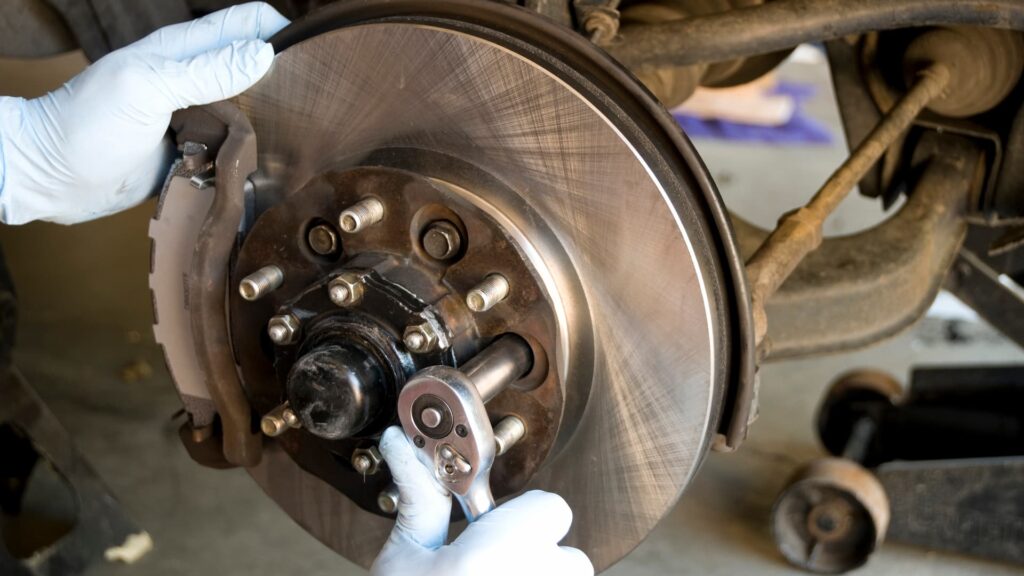How Long Can Car Tires Be Stored: Expert Tips for Maximum Lifespan
Car tires can be stored for up to six years if they are properly maintained and stored under the right conditions. However, it is important to visually inspect tires for signs of aging, regardless of their age. Environmental conditions and how the tires are used also play a role in their lifespan. Storing tires in a cool, dry, and dark location can help extend their service life. If tires are over ten years old, it is not recommended to use them at all. With the right storage and maintenance, tires can last up to six years before needing to be replaced. Proper storage methods, such as using hooks through the rim, can help reduce the risk of damage to the tires while in storage. Factors Affecting The Lifespan Of Stored Car Tires Proper storage conditions can extend the service life of car tires up to six years. However, if tires are not stored correctly, their characteristics can change, shortening their lifespan and even causing them to deteriorate to the point of needing replacement. It is important to visually inspect tires for signs of aging and to consider environmental conditions and usage when determining their lifespan. Properly storing car tires is crucial for maintaining their longevity. If tires are not stored correctly, their characteristics can change, shortening their lifespan and even necessitating replacement. Several factors can influence the lifespan of stored car tires, including proper storage conditions, environmental factors, and tire usage. Understanding these factors is essential for ensuring that tires remain in optimal condition during periods of storage. Proper Storage Conditions For Long-lasting Tires Storing car tires in the right conditions plays a significant role in extending their lifespan. When it comes to tire storage, it’s important to consider the following: Temperature: Tires should be stored in a cool and dry environment to prevent premature aging and deterioration. Extreme temperatures, both hot and cold, can cause the rubber to become brittle or break down, leading to reduced tire life. Humidity: Excess moisture can damage tires by promoting the growth of mold and mildew. Therefore, it is essential to store tires in a low-humidity environment to prevent these issues. Light: Exposure to UV rays can accelerate tire aging and deterioration. To protect tires from sunlight, they should be stored in a dark or dimly lit area. Positioning: Tires should be stacked vertically and not horizontally to avoid deformation or improper weight distribution. Cleanliness: Prior to storage, tires should be thoroughly cleaned to remove any dirt, debris, or chemicals that could potentially damage the rubber. Effects Of Environmental Conditions On Tire Lifespan Environmental conditions greatly impact the lifespan of stored car tires. External factors such as sunlight, heat, cold, and moisture can significantly accelerate tire aging and reduce their overall lifespan. For example: Excessive heat can cause the rubber to dry out and become brittle, leading to cracking and potential blowouts. Cold temperatures can cause the rubber to harden, reducing traction and increasing the risk of tire damage. Moisture from high humidity or exposure to water can lead to corrosion of the tire components and weaken the rubber over time. UV rays from sunlight can cause the rubber to degrade, resulting in cracking, discoloration, and reduced tire performance. Understanding The Impact Of Tire Usage On Storage Life Tire usage also has a significant impact on their lifespan during storage. Factors to consider include: Mileage: Tires with higher mileage tend to have more wear and may have a shorter storage life compared to tires with lower mileage. Driving Habits: Aggressive driving, frequent braking, and rough road conditions can accelerate tire wear and reduce their storage life. Tire Maintenance: Regular tire maintenance, such as proper inflation, rotation, and alignment, can help prolong tire lifespan, both during use and while in storage. Age: Tires have a maximum shelf life regardless of usage. If a tire is more than six years old from the date of production, it is recommended to replace it, even if it has been stored under ideal conditions. By considering these factors and implementing proper tire storage practices, car owners can ensure that their tires remain in optimal condition during periods of storage, ultimately extending their lifespan and maximizing their value. Signs Of Aging In Stored Car Tires Proper tire storage is crucial to maintaining their quality and longevity. Over time, even unused car tires can experience aging and deterioration, affecting their performance and safety on the road. It’s essential to be aware of the signs of aging in stored car tires to ensure their reliability when it’s time to use them. Identifying Visual Indications Of Tire Deterioration One of the primary ways to assess the condition of stored car tires is through visual inspection. Here are some common visual indications of tire deterioration: Cracking or splitting: Look out for cracks or splits in the tire’s sidewall or tread. These can indicate dry rotting or aging of the rubber. Bulges or deformities: Any bulges or deformities on the tire surface may suggest internal damage or weakening, compromising the tire’s strength. Fading or discoloration: A tire that has significantly faded or changed color may have been exposed to excessive sunlight or other environmental factors, leading to aging. Uneven wear patterns: Uneven tread wear can be a sign of tire aging or improper storage conditions. Check for excessive wear on one side or in the middle of the tire. How To Check For Tire Dry Rotting Dry rot is a common issue in stored car tires, caused by the breakdown of rubber due to exposure to heat, direct sunlight, or extreme temperatures. To check for dry rotting: Inspect the tire sidewalls and tread carefully for small cracks or fissures. Use your fingers to gently press the rubber. If it feels brittle or crumbles, it may indicate dry rot. Look for a powdery residue on the tire’s surface, as this can be a sign of rubber deterioration. If you discover dry rotting in your stored car tires, it’s essential to replace them immediately to
How Long Can Car Tires Be Stored: Expert Tips for Maximum Lifespan Read More »


